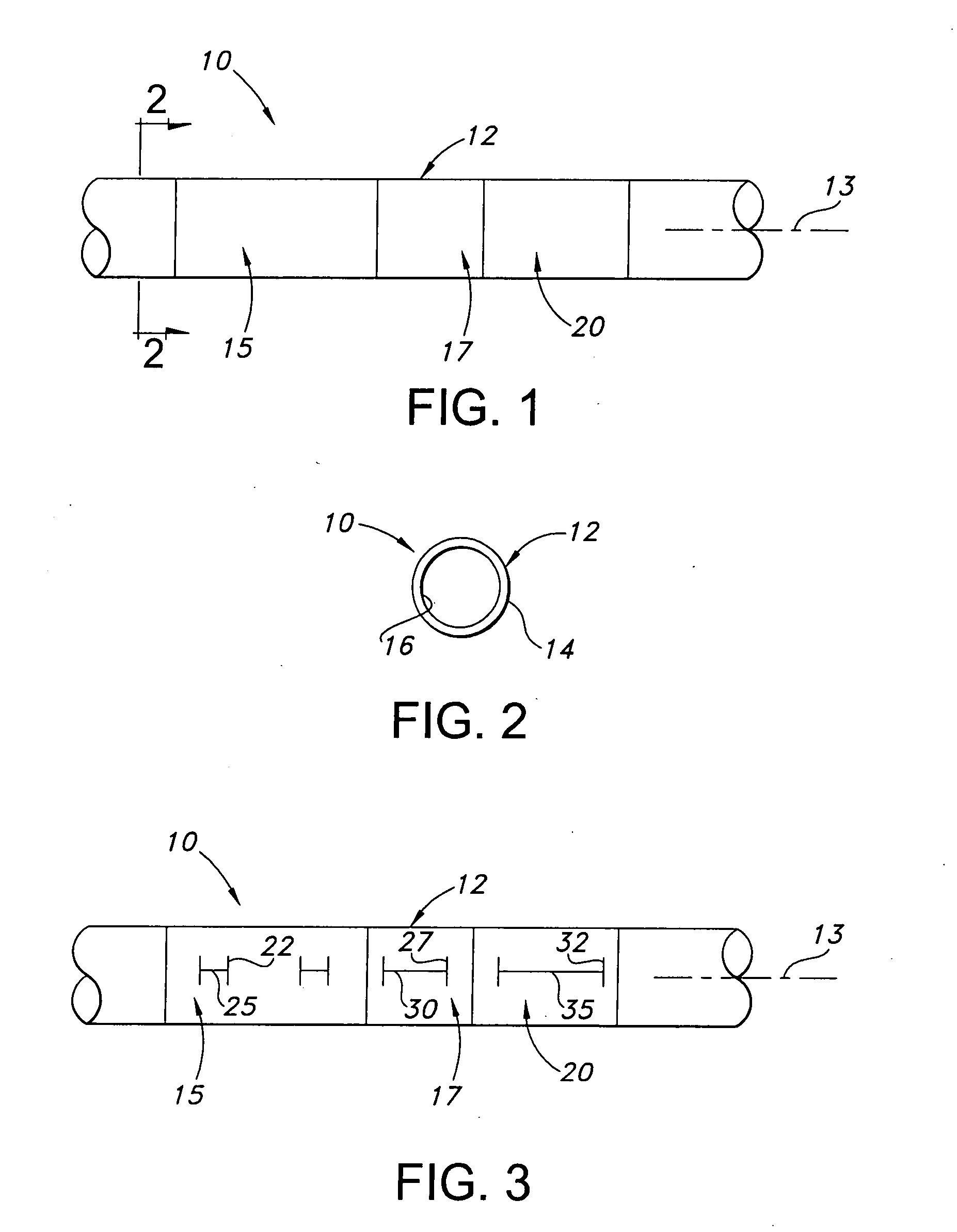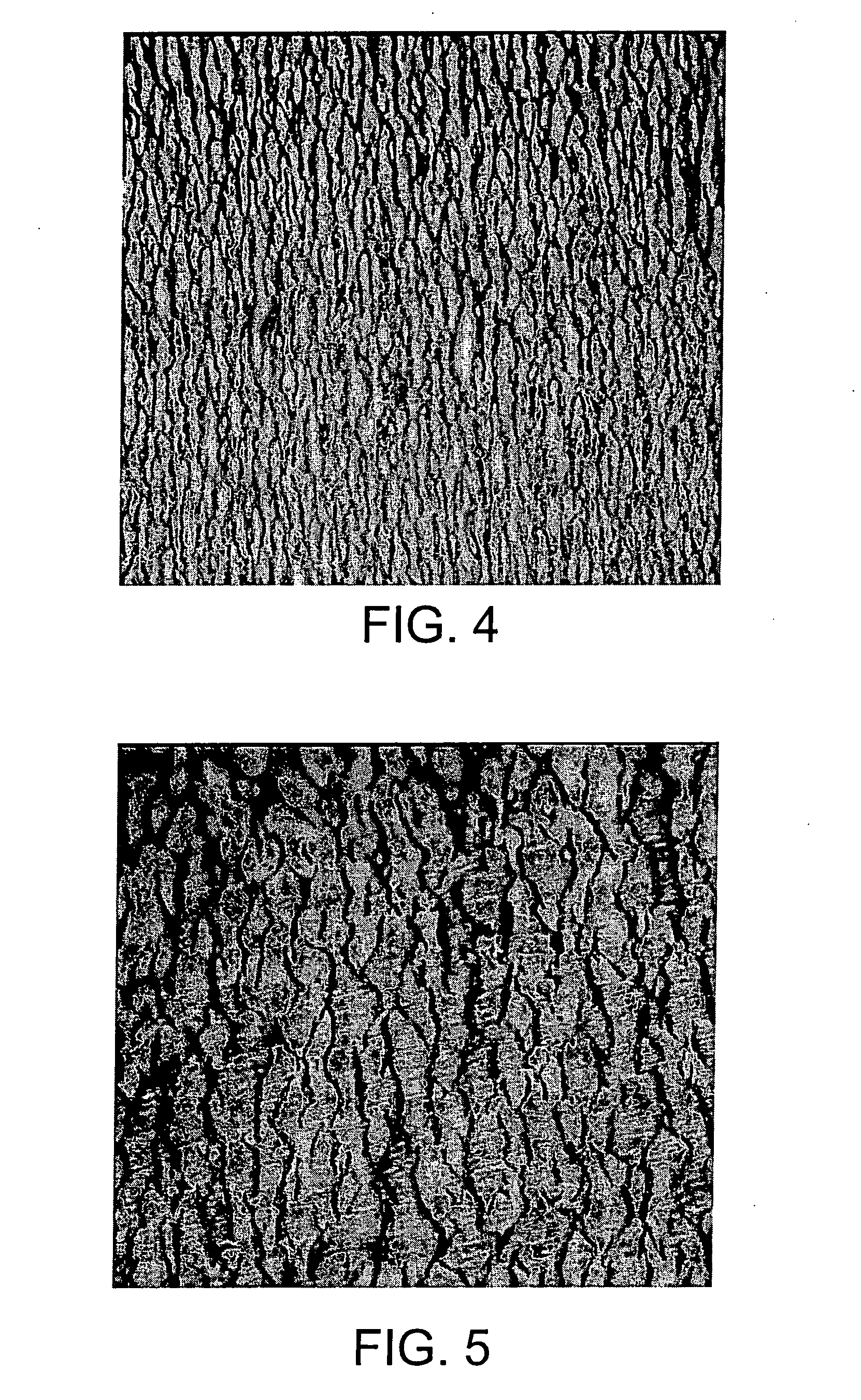Preferentially varying-density ePTFE structure
a technology of eptfe and polytetrafluoroethylene, which is applied in the field of structures containing expanded polytetrafluoroethylene, can solve the problems of increased pore size, increased porosity, and larger voids in the eptfe material, and achieves enhanced tissue ingrowth, low density, and increased stability of the graft within the human body.
- Summary
- Abstract
- Description
- Claims
- Application Information
AI Technical Summary
Benefits of technology
Problems solved by technology
Method used
Image
Examples
Embodiment Construction
[0034]Referring to the drawings and more particularly to FIGS. 1 and 2, a preferentially varying-density ePTFE structure 10 is shown for implantation within a body. The ePTFE structure 10 shown in FIG. 1 is a tubular structure 12 which has a longitudinal axis 13, and outer and inner surfaces 14, 16. The tubular structure 12 has an annular or ring shaped cross-section, the outer and inner diameters of which are substantially constant along the length of the tubular structure. In alternative embodiments, the ePTFE structure 10 may have non-tubular structures such as a plate or a fiber which has a solid or continuous or closed cross-section. The ePTFE structure 10 is formed of homogeneous material having a fibrous state which is defined by interspaced nodes which are interconnected by elongated fibrils, referred to herein as a “node and fibril microstructure”.
[0035]The tubular structure 12 has longitudinal first, second, and third regions 15, 17, 20. The first, second, and third region...
PUM
 Login to View More
Login to View More Abstract
Description
Claims
Application Information
 Login to View More
Login to View More - R&D
- Intellectual Property
- Life Sciences
- Materials
- Tech Scout
- Unparalleled Data Quality
- Higher Quality Content
- 60% Fewer Hallucinations
Browse by: Latest US Patents, China's latest patents, Technical Efficacy Thesaurus, Application Domain, Technology Topic, Popular Technical Reports.
© 2025 PatSnap. All rights reserved.Legal|Privacy policy|Modern Slavery Act Transparency Statement|Sitemap|About US| Contact US: help@patsnap.com



